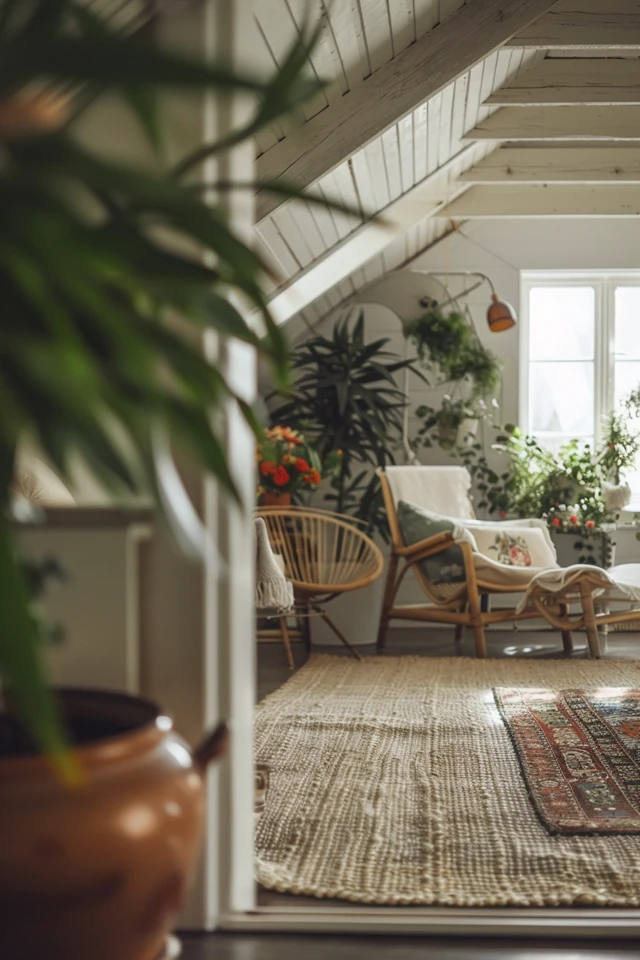Last winter, our attic makeover got noticed by This Old House magazine. Their team captured the attic’s charm and nostalgia well. The space now shines as a cozy sitting area and office.
The attic is a hidden gem for creating nostalgia. Its unique structure with sloping ceilings and hidden nooks made it perfect for a vintage vibe.
Our attic turned into a warm, nostalgic spot after the makeover. This Old House magazine featured the transformation. The detailed attention and charm caught in the photos are amazing.
The photographer and stylist showcased the vintage attic beautifully. Their work highlighted the design elements and nostalgic touches. Now, it’s a modern yet nostalgic space that feels like a step back in time.
Our stylist added green pops during the renovation. These touches brought a nature-inspired beauty to the vintage attic. The details along with the stylist’s work make it a truly nostalgic space.
We loved working with This Old House. Their team and our vision together made the vintage attic come alive. The final result perfectly marries modern skill with timeless design.

Transforming the Attic Space
The attic renovation had many steps to make it useful and comfy. First, we got rid of old attic insulation and HVAC ducts, starting fresh. This step was all about preparing the space for change.
Next, we built a “knee wall” to separate the living room from the attic. It marked the border and added extra support.
Then, we rewired the whole house, putting in new electric lines through the attic. This made sure the attic was safely powered for appliances and lights.
We also set up a mini-split heat pump for temperature control, making ductwork unnecessary. This was about keeping the attic comfortable efficiently.
Adding an energy recovery ventilator (ERV) was a big step. This system keeps the air inside clean by swapping it out with fresh air, saving energy all the while.
Good ventilation was crucial for keeping the attic dry and comfortable. We used various vents for airflow, preventing damage and making the space enjoyable.
Insulation and air sealing were also key in keeping the attic cozy. They stopped air from escaping and let us control the temperature better inside.
The attic’s change was a detailed and thoughtful process. It involved fixing insulation, HVAC, electrical work, and improving ventilation and energy use. These steps turned a neglected area into a place that’s welcoming and usable.

Converting an Unused Attic into a Functional Space
Have you ever thought about changing your attic into something useful and stylish? In our farmhouse, we turned it into a walk-in closet. First, we checked the rules, the height of the attic, and its structure to be safe and smart in our work.
Our attic was a little low, but perfect for a walk-in closet. It gave us a lot of space for our things. We made sure that good air could flow to stop mold and problems with the roof.
We made sure our attic floor was strong, put up walls with special doors, and added power and lights for use. We made sure the air was good by creating ventilation and putting insulation everywhere. Plus, we made the place look nice with special wood on the walls and ceiling.
Because of these changes, we now have a great place to keep clothes and get ready every day. We love how it turned out. We plan to finish working on the bathroom next. Transforming an attic into something you actually use makes your home better in many ways.


